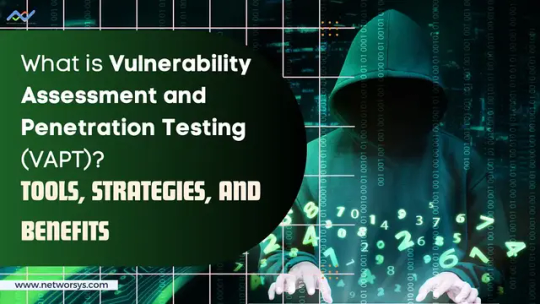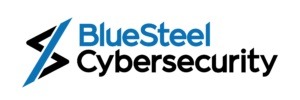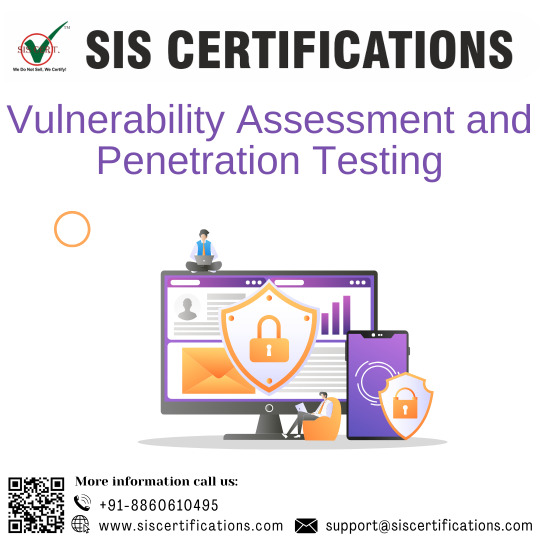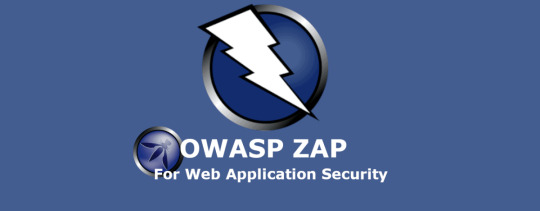#vulnerability assessment
Text

#expert vulnerability assesment#vulnerability assessment#sis certifications#vapt certification#vapt#iso certification#vapt standard
0 notes
Text
What is Vulnerability Assessment and Penetration Testing (VAPT)?: Tools, Strategies, and Benefits

In the rapidly evolving digital landscape, cybersecurity has become a paramount concern for businesses of all sizes. Ensuring that your organization's data and systems are secure from potential threats is not just a necessity but a fundamental aspect of your business operations. This is where Vulnerability Assessment and Penetration Testing (VAPT) comes into play. At Networsys, we understand the critical importance of protecting your digital assets. This comprehensive guide will delve into what Vulnerability Assessment and Penetration Testing entails, the tools and strategies involved, and the significant benefits it offers.
What is Vulnerability Assessment and Penetration Testing (VAPT)?
Vulnerability Assessment and Penetration Testing (VAPT) is a combination of two crucial security testing processes. While they serve different purposes, together they provide a thorough evaluation of an organization's security posture.
Vulnerability Assessment
Vulnerability Assessment is a systematic process used to identify and classify security vulnerabilities in an information system. It involves scanning the system for weaknesses that could be exploited by attackers. This assessment focuses on detecting known vulnerabilities and providing detailed reports that categorize these vulnerabilities based on their severity.
Penetration Testing
Penetration Testing, also known as ethical hacking, goes a step further. It simulates real-world cyber-attacks to evaluate the security of a system. Penetration Testers, or ethical hackers, use various techniques to exploit vulnerabilities in a controlled manner. This helps organizations understand how a malicious actor could gain unauthorized access and what data or functionalities are at risk.
By combining Vulnerability Assessment and Penetration Testing, organizations can get a comprehensive view of their security landscape, identifying both existing weaknesses and the potential impact of an exploit.
Tools for Vulnerability Assessment and Penetration Testing
Several tools are available to aid in Vulnerability Assessment and Penetration Testing. Here are some of the most widely used:
Vulnerability Assessment Tools
Nessus
Nessus is a highly popular tool for vulnerability assessment. It scans for various types of vulnerabilities, including misconfigurations, default passwords, and compliance issues. Nessus provides detailed reports and prioritizes vulnerabilities based on their potential impact.
OpenVAS
OpenVAS is an open-source tool that offers comprehensive vulnerability scanning. It supports a wide range of tests for detecting security issues and provides extensive reporting capabilities.
QualysGuard
QualysGuard is a cloud-based tool that offers continuous vulnerability assessment. It helps in identifying vulnerabilities, misconfigurations, and compliance issues across a range of IT assets.
Strategies for Effective Vulnerability Assessment and Penetration Testing
Implementing Vulnerability Assessment and Penetration Testing requires a strategic approach to ensure comprehensive coverage and actionable insights. Here are some strategies to consider:
Planning and Scoping
Before starting the VAPT process, it is crucial to define the scope and objectives. This involves identifying the assets to be tested, the testing methodologies, and the rules of engagement. Clear communication with stakeholders is essential to align expectations and ensure a smooth testing process.
Comprehensive Coverage
Ensure that the assessment and testing cover all critical areas of your IT infrastructure. This includes networks, applications, databases, and endpoints. Comprehensive coverage helps in identifying vulnerabilities across the entire attack surface.
Regular Assessments
Vulnerabilities can emerge at any time due to new threats, software updates, or changes in the IT environment. Regular vulnerability assessments help in identifying new weaknesses and ensuring that existing vulnerabilities are addressed promptly.
Combining Automated and Manual Testing
Automated tools are effective for quickly scanning large environments and identifying common vulnerabilities. However, manual testing by skilled professionals is essential for uncovering complex and hidden vulnerabilities that automated tools might miss. A combination of both approaches ensures thorough testing.
Prioritizing Vulnerabilities
Not all vulnerabilities pose the same level of risk. It is important to prioritize vulnerabilities based on their potential impact and exploitability. This helps in focusing remediation efforts on the most critical issues first.
Reporting and Remediation
Effective reporting is crucial for communicating the findings of VAPT to stakeholders. Reports should provide detailed information about identified vulnerabilities, their severity, and recommended remediation steps. Implementing the recommended fixes promptly is essential for maintaining a secure environment.
Benefits of Vulnerability Assessment and Penetration Testing
Implementing Vulnerability Assessment and Penetration Testing offers numerous benefits that contribute to the overall security and resilience of your organization. Here are some of the key benefits:
Enhanced Security Posture
VAPT helps in identifying and addressing security weaknesses before they can be exploited by attackers. This proactive approach significantly enhances the security posture of your organization, making it more resilient against cyber threats.
Risk Management
By identifying vulnerabilities and assessing their potential impact, VAPT enables organizations to understand their risk exposure. This helps in making informed decisions about risk management and prioritizing security investments.
Compliance and Regulatory Requirements
Many industries are subject to regulatory requirements that mandate regular security assessments and testing. VAPT helps in ensuring compliance with these regulations and avoiding potential fines and penalties.
Protecting Sensitive Data
Data breaches can have severe consequences, including financial losses and reputational damage. VAPT helps in identifying vulnerabilities that could lead to data breaches and implementing measures to protect sensitive information.
Cost Savings
Addressing vulnerabilities before they are exploited can save organizations significant costs associated with data breaches, downtime, and recovery efforts. Investing in VAPT is a cost-effective way to prevent costly security incidents.
Improved Incident Response
VAPT provides valuable insights into the attack vectors and tactics that could be used against your organization. This knowledge helps in improving incident response plans and ensuring a quicker and more effective response to security incidents.
Building Trust with Customers and Partners
Demonstrating a commitment to security through regular VAPT builds trust with customers and partners. It shows that your organization takes security seriously and is proactive in protecting its digital assets.
Continuous Improvement
VAPT is not a one-time activity but an ongoing process. Regular assessments and testing help in continuously improving your security posture and staying ahead of emerging threats.
Conclusion
In the ever-changing landscape of cybersecurity threats, Vulnerability Assessment and Penetration Testing (VAPT) is an essential practice for any organization aiming to protect its digital assets. By systematically identifying and addressing security vulnerabilities, VAPT provides a comprehensive evaluation of your security posture and helps in mitigating risks effectively. At Networsys, we emphasize the importance of integrating VAPT into your cybersecurity strategy to ensure robust protection against potential threats. Investing in VAPT not only enhances your security but also fosters trust and confidence among your stakeholders, ultimately contributing to the success and sustainability of your business.
#cybersecurity#vulnerability#penetration testing#cyberattack#vulnerability assessment#vapt services#cyber security services
0 notes
Text
House Votes to Advance Bill That Could Ban TikTok in the U.S.
Legislation Passed: The House voted in favor of a bill that could lead to a ban on TikTok in the US unless ByteDance sells it to an American company.
Senate Expectations: The bill, now heading to the Senate, is expected to pass there as well.
Security Concerns: US politicians have security concerns over TikTok’s data sharing with the Chinese government, given ByteDance’s obligations.
Potential…

View On WordPress
#access control#AI News#automated incident response#bytedance#cayman#cybersecurity#data collection#data security#douyin#ethical AI#house bill#identity management#model security#national security#News#red teaming#threat detection#tiktok#vulnerability assessment
0 notes
Text
Compliance Gap Assessment: Bridging the Divide Between Compliance and Reality

In today's complex regulatory environment, businesses face increasing pressure to comply with a myriad of laws, regulations, and industry standards. Failure to meet these requirements can lead to hefty fines, legal repercussions, and damage to reputation. This is where compliance gap assessment comes into play.
Introduction to Compliance Gap Assessment
Compliance gap assessment is a systematic process of evaluating an organization's adherence to relevant laws, regulations, and internal policies. It involves identifying discrepancies between current practices and desired compliance standards.
Why Conduct a Compliance Gap Assessment?
Conducting a compliance gap assessment is essential for several reasons:
Identifying potential risks: By pinpointing areas of non-compliance, organizations can proactively address risks before they escalate.
Ensuring regulatory compliance: Compliance with laws and regulations is non-negotiable for businesses operating in various industries.
Improving operational efficiency: Streamlining processes and eliminating unnecessary steps can lead to cost savings and improved productivity.
Key Components of a Compliance Gap Assessment
A successful compliance gap assessment involves several key components:
Establishing objectives: Clearly defining the goals and scope of the assessment is crucial for focusing efforts and resources effectively.
Reviewing current policies and procedures: Evaluating existing policies, procedures, and controls provides a baseline for comparison.
Identifying gaps: Analyzing the differences between current practices and regulatory requirements helps prioritize areas for improvement.
Developing a remediation plan: Creating a detailed action plan ensures that identified gaps are addressed systematically.
Steps to Perform a Compliance Gap Assessment
Performing a compliance gap assessment involves the following steps:
Planning and preparation: Define the scope, objectives, and timeline for the assessment. Allocate resources and designate responsibilities accordingly.
Data collection and analysis: Gather relevant documentation, conduct interviews, and collect data to assess compliance across various areas.
Gap identification: Compare current practices against regulatory requirements to identify gaps and deficiencies.
Remediation planning: Develop a comprehensive plan to address identified gaps, including timelines, responsibilities, and resources required.
Implementation and monitoring: Execute the remediation plan, track progress, and make adjustments as necessary to ensure ongoing compliance.
Common Challenges in Compliance Gap Assessment
Despite its importance, compliance gap assessment can pose several challenges:
Lack of resources: Limited budget, time, and expertise can hinder the effectiveness of the assessment process.
Complexity of regulations: Keeping up with evolving regulations and interpreting their implications can be daunting for organizations.
Resistance to change: Implementing changes to achieve compliance may encounter resistance from stakeholders accustomed to existing practices.
Best Practices for Successful Compliance Gap Assessments
To overcome these challenges and ensure a successful compliance gap assessment, organizations should consider the following best practices:
Leadership commitment: Senior management should demonstrate unwavering support for compliance initiatives and allocate necessary resources.
Cross-functional collaboration: Involving stakeholders from various departments fosters a holistic understanding of compliance requirements and facilitates alignment of efforts.
Regular reviews and updates: Compliance is an ongoing process. Regular reviews and updates ensure that policies and procedures remain current and effective.
Case Studies: Real-world Examples of Compliance Gap Assessment
Healthcare Industry
In the healthcare sector, compliance with regulations such as HIPAA (Health Insurance Portability and Accountability Act) is paramount to safeguarding patient data and ensuring quality care. Conducting regular gap assessments helps healthcare organizations identify vulnerabilities and strengthen their compliance posture.
Financial Sector
Banks and financial institutions are subject to stringent regulations aimed at protecting consumers and maintaining financial stability. Compliance gap assessments enable these organizations to detect potential issues such as fraud, money laundering, and regulatory violations.
Manufacturing Companies
Manufacturing companies must adhere to a multitude of regulations governing product safety, environmental impact, and labor practices. Compliance gap assessments assist manufacturers in identifying areas for improvement and ensuring adherence to regulatory requirements.
Benefits of Conducting a Compliance Gap Assessment
The benefits of conducting a compliance gap assessment extend beyond mere regulatory compliance:
Risk mitigation: Identifying and addressing compliance gaps reduces the likelihood of fines, legal penalties, and reputational damage.
Cost savings: Streamlining processes and eliminating inefficiencies can lead to significant cost savings over time.
Enhanced reputation: Demonstrating a commitment to compliance and ethical business practices enhances trust and credibility among stakeholders.
Conclusion
Compliance gap assessment is a critical component of any organization's risk management and governance strategy. By systematically evaluating compliance across various areas, businesses can identify and address potential risks, ensure regulatory adherence, and enhance operational efficiency. Embracing best practices and leveraging real-world examples can help organizations navigate the complexities of compliance effectively.
FAQs (Frequently Asked Questions)
What is compliance gap assessment? Compliance gap assessment is a systematic process of evaluating an organization's adherence to relevant laws, regulations, and internal policies.
Why is compliance gap assessment important? Conducting a compliance gap assessment helps organizations identify potential risks, ensure regulatory compliance, and improve operational efficiency.
What are the key components of a compliance gap assessment? The key components include establishing objectives, reviewing current policies and procedures, identifying gaps, and developing a remediation plan.
What are some common challenges in compliance gap assessment? Common challenges include lack of resources, complexity of regulations, and resistance to change.
What are the benefits of conducting a compliance gap assessment? The benefits include risk mitigation, cost savings, and enhanced reputation.

#Compliance Gap Assessment#Risk Assessment#Vulnerability Assessment#"Application Security Testing & Penetration Services#Application Penetration Testing#Application Security Testing#Cybersecurity Compliance Preparation#Cybersecurity Program Support#Healthcare Cybersecurity Services#Cybersecurity Services for FinTech#HIPAA HITECH Compliance Certification#ISO 27001 Security Program
0 notes
Text
1 note
·
View note
Text

#expert vulnerability assesment#sis certifications#vulnerability assessment#vulnerability#vulnerability assesment and penetration testing#iso certification#siscertifications#vapt services#vapt#vapt certification#sis certification
0 notes
Text

The evolution of data governance in Southeast Asia reflects a significant paradigm shift, moving from mere data organization to a strategic approach rooted in data intelligence. Central to this evolving landscape are advanced practices in data discovery and classification, enabling organizations to proactively manage data assets.
#pci dss compliance#pci dss saq#pci software security framework#pci secure software standard#pci secure software lifecycle#iso 27001 audit#GDPR.risk assessment#vulnerability assessment
0 notes
Text
In today's digitally driven world, cybersecurity is paramount. Vulnerabilities within systems and networks pose significant threats to organizations. As large and small organizations increasingly find themselves exposed to an ever-evolving landscape of cyber threats, it becomes imperative to identify and address vulnerabilities within their systems and networks proactively. This is where Vulnerability Assessment, a critical component of any comprehensive cybersecurity strategy, comes into play.
#vulnerability assessment#cybersecurity#cyber threats#security#ceh certification#ceh#infosectrain#learntorise
0 notes
Text
มาตรวจสอบช่องโหว่ด้วย OWASP ZAP กัน
OWASP ZAP (Zed Attack Proxy) เป็นเครื่องมือที่ใช้สำหรับการทดสอบความปลอดภัยของแอปพลิเคชันเว็บ โดยสามารถใช้งานในการตรวจสอบช่องโหว่ความปลอดภัยต่างๆ ที่อาจเกิดขึ้นกับเว็บแอปพลิเคชัน ในกรณีที่คุณต้องการทดสอบความปลอดภัยของเว็บแอปพลิเคชันของคุณด้วย OWASP Zap นี่คือขั้นตอนที่คุณสามารถทำตามได้
ดาวน์โหลด OWASP Zap ได้จากเว็บไซต์ของ OWASP ที่ https://www.zaproxy.org/download/
เริ่มต้นใช้งาน OWASP Zap…

View On WordPress
0 notes
Text
Top 20 Open Source Vulnerability Scanner Tools in 2023
Top 20 Open Source Vulnerability Scanner Tools in 2023 @vexpert #vmwarecommunities #100daysofhomelab #homelab #OpenSourceVulnerabilityScanners #SecurityTools #VulnerabilityAssessment #PenetrationTesting #SQLInjection #NetworkVulnerabilityTests
In the world of cybersecurity, having the right tools is more important than ever. An extremely important tool for cybersecurity professionals is the vulnerability scanners. They are designed to automatically detect vulnerabilities, security issues, and potential threats in your systems, applications, or network traffic. By carrying out network vulnerability tests and scanning web applications,…

View On WordPress
#Container Image Scanning#License Compliance#Network Vulnerability Tests#Open Source Vulnerability Scanners#Penetration Testing#Security Testing#security tools#Software Composition Analysis#SQL Injection#Vulnerability Assessment
0 notes
Text
How to Choose the Right Cyber Security Advisory Firm for Your Business Needs
Businesses of all sizes worry about cyber dangers in the digital era. Data breaches and ransom ware attacks may ruin reputations and finances. Working with a trusted and knowledgeable cyber security consultancy company is vital to reduce risks and secure your organization. How can you pick from so many options? This article discusses choosing a cyber security advisory company that meets your business requirements.


Steps to Choosing the Right Cyber Security Guidance Firm
To choose the right cyber security guidance company for your organization, follow these steps. Steps are:
1. Determine company requirements.
Choosing a cyber security consultancy business starts with this. To choose the ideal organization, you must know your needs.
2. Research your options.
After determining your needs, explore cyber security advice providers. Check their services, pricing, and reputations to choose one that fits your company.
3. Get several quotations.
After narrowing your choices, call each business and obtain an estimate. This lets you compare prices and services across businesses.
Benefits of Working with a Cyber Security Guidance Firm
A Vulnerability assessment is one of the finest ways to protect your organization from cyber attacks. Working with a trusted cyber security consultancy company has several advantages:
1. They will identify risks and weaknesses.
A reputable cyber security consultancy business can assist you in discovering organizational risks and weaknesses. They may advise on risk mitigation.
2. They'll create a thorough security strategy.
After identifying risks and weaknesses, a qualified cyber security advice business will help you create a security strategy. This strategy outlines how to protect your company against cyber attacks.
3. They will provide ongoing support.
A good cyber security consultancy business will help you create a complete security strategy and assist in its implementation. They may also help you make plan revisions.
Conclusion
Choose a cyber security guidance company carefully. Choosing the right company for your organization with so many options is challenging. However, evaluate their competence and experience, devotion to customer service and data security, and pricing of services or goods. In that case, you will discover a business that fits all your needs and offers continuing assistance.
0 notes
Text
Penetration Testing: Ensuring the Security of Your Organization
The objective of a penetration test is to simulate a real-world attack on a system and identify weaknesses in the security defenses. Read more...
Penetration testing is the practice of testing a computer system, network or web application to identify vulnerabilities that a hacker could potentially exploit. The purpose of a penetration test is to find security weaknesses before an attacker can exploit them. Penetration testing is an essential part of any security program and helps organizations to identify and remediate security weaknesses…

View On WordPress
#best practices#Cybersecurity#ethical hacking#information security#network security#penetration testing#social engineering#tools#vulnerability assessment#Web application security#wireless network security
1 note
·
View note
Text
#vapt#vapt standard#vapt certification#expert vulnerability assesment#vulnerability assessment#sis certifications
0 notes
Text
Evolution of Data Governance in Southeast Asia: Trends, Regulations, and Best Practices

In today’s rapidly evolving digital landscape, where data serves as the lifeblood of businesses, the importance of effective data governance cannot be overstated. Southeast Asian organizations, like their global counterparts, are navigating a complex web of data regulations, compliance standards, and security challenges. The evolution of data governance in this region reflects a significant paradigm shift, moving from mere data organization to a strategic approach rooted in data intelligence.
Central to this evolving landscape are advanced practices in data discovery and classification, enabling organizations to proactively manage data assets. In this context, building a robust, future-proof data governance framework has become paramount. This article delves into the intricate journey of data governance in Southeast Asian organizations, exploring the pivotal role of popular standards, the alignment of regional regulations with global counterparts, and the significance of data discovery and classification.
Evolution of Data Governance in Southeast Asia
In recent years, data protection and governance has undergone a significant evolution among organizations in Southeast Asia. Traditionally, data governance was seen as a technology-centric practice, focused on organizing and cataloging data. However, this perspective has shifted as organizations have recognized the critical role data plays in their operations. With the advent of data privacy laws, such as the Personal Data Protection Act (PDPA) in Singapore, companies began incorporating risk management practices into their data governance strategies. This involved creating information asset registries and analyzing the Confidentiality, Integrity, and Availability (CIA) of data to ensure legitimate usage and establish appropriate controls.
Additionally, the COVID-19 pandemic served as a catalyst for the acceleration of digital transformation across industries. Organizations recognized the immense value held within their various data sets, especially in informing critical business decisions. This pivotal shift led to the evolution of data governance from a mere organizational necessity into a data intelligence-centric approach.
secure.
“Data intelligence is the connecting point for all data elements within a data management system, delivering information and insights that improve customer experience and drive innovation and process improvements.”
– Mel Migrino, Chairman and President, WiSAP (Women in Security Alliance Philippines)
Significance of PCI DSS in Financial Institutions
In the financials sector, adhering to established standards is more than just a regulatory obligation — it’s a mission-critical aspect of operations. A prime example is the Payment Card Industry Data Security Standard (PCI DSS), which financial institutions worldwide employ to ensure the secure handling of payment data.
PCI DSS, developed by experts from across the globe, including the PCI Council, payment networks, and cybersecurity professionals, is a well-recognized global standard. It has undergone iterative improvements, incorporating feedback from diverse stakeholders. Organizations in the Asia-Pacific region, including Southeast Asia, have embraced PCI DSS for multiple reasons as listed below:
Compliance with PCI DSS is a contractual obligation for merchants and acquirers. Failure to comply could result in sanctions and damage to an organization’s reputation. By adhering to this standard, organizations reduce the risk of non-compliance and ensure their legal and operational obligations are met.
The PCI DSS standard actively seeks feedback from its global community, ensuring that the guidelines stay up to date with evolving security threats. This responsive approach ensures organizations implementing the standard are confident about the effectiveness of security controls.
Beyond compliance, many organizations have extended PCI DSS principles to protect other sensitive data, recognizing its effectiveness in safeguarding confidential information.
In essence, the adoption of global standards like PCI DSS provides financial institutions with not only a compliance framework but also a security blueprint that safeguards their sensitive financial data. It serves as a testament to the proactive commitment to protecting both internal and external stakeholders.
“Security threats evolve, and standards must evolve with them. The feedback-driven approach helps standards stay on top of emerging trends.”
– Yew Kuann Cheng, Regional VP, Asia Pacific, PCI SSC
Harmonization of Regulations in Southeast Asia with Global Standards
In an era of interconnected data ecosystems, data governance regulations are continually evolving to ensure data protection and privacy. These regulations often exhibit a degree of interplay, with global standards influencing and inspiring one another. In Southeast Asia, particularly Singapore, the PDPA standards have laid the foundation for the broader ASEAN (Association of Southeast Asian Nations) region’s data governance and privacy regulations, emphasizing the roles of data controllers, data processors, and privacy considerations. Cross-border data transfers have become a universal concern, and global standards play a pivotal role in addressing this challenge. GDPR (General Data Protection Regulation), emerging from the European Union, sets a stringent precedent for the security controls required for cross-border data transfer. In India, the recently introduced DPDP Act (Digital Personal Data Protection Act) aligns with international best practices, incorporating elements from various global standards like NIST, PDPA, and GDPR. China, too, has developed its own regulatory frameworks, including the CSL (Cyber Security Law) and DSL (Data Security Law), which are known for their stringent economic focus.
In the ASEAN framework, close collaboration between legal departments is essential to develop regulations that align with the global need for robust data governance while adapting to local laws. Across these regulations, common principles, such as data discovery and classification, underpin data governance practices. Regardless of the specific framework in place, understanding where data resides and comprehending data lineage is consistently emphasized.
Additionally, global standards like NIST and PCI DSS guide comprehensive data protection practices that emphasize anonymization, pseudonymization, tokenization, masking, and encryption. Data governance is a global collaborative effort that involves sharing, adapting, and implementing best practices to suit local regulatory and business needs. While the journey from standards’ publication to regional adoption varies, the core concepts remain strikingly similar. In essence, data governance revolves around safeguarding data, understanding its flow, and ensuring security and privacy, reflecting a global commitment to data protection in a data-driven world.
Role of Data Discovery and Classification
In the rapidly evolving landscape of data governance, data discovery and classification have emerged as fundamental pillars. These two closely intertwined elements are instrumental in optimizing an organization’s data management practices. Data discovery, the first cornerstone, entails identifying the precise locations where data is stored. This critical step lays the foundation for effective data protection, ensuring that organizations are cognizant of their data assets’ whereabouts and can implement requisite security measures. With increasingly sophisticated data discovery tools, businesses can compile exhaustive data inventories and maps, facilitating informed decision-making on data management and protection.
Complementing this is data classification, which is equally vital. It involves categorizing data based on its sensitivity and value, enabling organizations to distinguish data demanding stringent protection from that which can be shared more openly. This classification guides the application of security controls such as encryption and access restrictions. Ultimately, data classification empowers organizations to tailor safeguards to different data types, thereby bolstering overall data protection and regulatory compliance. In this complex data landscape, data discovery and classification tools like SISA Radar prove invaluable, allowing businesses to maintain a well-structured and efficient data governance approach.
“Data is of primary importance, and anything done to govern and secure that data involves classification, discovery, lineages, data flow diagrams, and more.”
– Prabhu Narayanan, VP — Data Protection & Governance, SISA
How to Build a Robust Data Governance Framework?
Building a future-proof data governance framework is an essential endeavor for organizations seeking to thrive in a data-driven world. Such a framework must encompass several key principles:
Integration with Business Processes: Data governance should not be an afterthought but rather integrated into core business processes from the beginning. This “shift left” approach ensures that data protection, integrity, quality, and privacy considerations are embedded in every stage of data workflows.
Collaboration and Alignment: Successful data governance requires close collaboration between different departments within an organization, including cybersecurity, legal, technology, and business teams. It’s crucial that data governance aligns seamlessly with broader business objectives to enhance security, compliance, and overall efficiency.
Continuous Adaptation: As global standards and regulations evolve, organizations must adapt to these changes in a timely and effective manner. This involves staying updated on the latest developments, actively seeking feedback from stakeholders, and implementing any necessary adjustments to data governance practices.
Data Discovery and Classification: Incorporating advanced data discovery and classification tools is an essential part of a future-proof data governance framework. These tools provide organizations with the knowledge they need to make informed decisions about data protection, risk management, and compliance.
In the ever-changing landscape of data governance, Southeast Asian organizations are poised to navigate challenges and opportunities through strategic adoption of global standards, meticulous compliance with regional regulations, and the seamless integration of advanced data discovery and classification techniques. By embracing these evolving trends and building robust data governance frameworks, businesses can safeguard sensitive information, foster innovation, and establish enduring trust among their stakeholders.
For a more detailed insight on the evolving landscape of data governance in Asia Pacific region, get in touch with SISA’s Data Protection and Governance experts or watch our latest panel discussion — Trends In Privacy Regulations in Asia Pacific and the Role of Data Governance.
#pci dss compliance#pci dss saq#pci software security framework#pci secure software standard#pci secure software lifecycle#iso 27001 audit#GDPR.risk assessment#vulnerability assessment
0 notes
Text
Overcome Splunk Critical Vulnerability more effectively with ESOF
In the mid-week of June, Splunk has come up with patches to fix the cross-site scripting vulnerabilities across the organization. However, a critical issue also leads to the arbitrary execution of code.
What is the Splunk critical vulnerability.?
The deployment server enables you to build a configuration pack that company agents can automatically download. These configurations also contain binary packages.
An administrator controls a deployment server via IP addresses, DNS names, or architecture. By default, most of the agents will operate the system on windows.
Splunk came up with a new critical-severe vulnerability CVE-2022-32158 having a CVSS score of 9.0. It enables the clients to grasp the server to distribute the forwarded bundles to various clients.
There is a risk that an attacker could compromise a Universal Forwarder endpoint and abuse it to execute arbitrary code on other endpoints connected to the deployment server. However, Splunk has fixed cross-site scripting vulnerabilities by bringing the Enterprise Deployment server version 9.0 and motivating the customers to update their versions to 9.0.
Also, the company has announced they have resolved many high-severity bugs in their enterprise. Version 9.0 enables the forwarder bundles to be downloaded without evidence.
Remediation requires updating all Universal Forwarders that the deployment server manages to version 9.0 or higher before enabling the remediation. Its cloud platform is not affected by these vulnerabilities as it does not use the servers.
How can ESOF fix the cross-site scripting vulnerabilities.?
The solution for fixing CVE-2022-32158 is to update their system to version 9.0, which is way too old. Other than this, there is no other solution to this problem; that means you will be affected by it. However, the ESOF Next-Gen platform can help in fixing the cross-site scripting vulnerabilities.
ESOF helps find vulnerabilities in conditions where products like Splunk are integrated into these types of vulnerabilities or risks. It provides Cyber Risk Score for these types of exposures or threats. The cyber score helps in understanding the cyber security posture.
ESOF has a one-click notification feature that lets the clients know about Zero-day risk linked with their assets. After detecting, it remediates the threats before their breaches.
0 notes
Text
me surrounded by all of my medical paperwork that disability services deems “not enough evidence” to claim support, after applying for the 5th time:

#spoonie#actually disabled#all because I don’t ‘tick a box’#all because of elaborate recited corporate language that essentially spells out ‘not disabled enough’#Australia may have - objectively - sort of good health care (up for debate obviously but it’s not Bad either) but jfc#the hoops disabled people have to leap through ….#only to be assessed by people who have no fucking idea what we deal with#sigh#I quite literally have to hand over sensitive vulnerable information#my whole life story (since BIRTH)#to faceless strangers#and wait to be judged worthy of support#how do they not expect anyone to be disheartened by this??#spoon tag#disability#disabled#chronic illness#chronic pain#chronically ill#medical conditions#healthcare#healthcare system#Australian healthcare#personal
234 notes
·
View notes